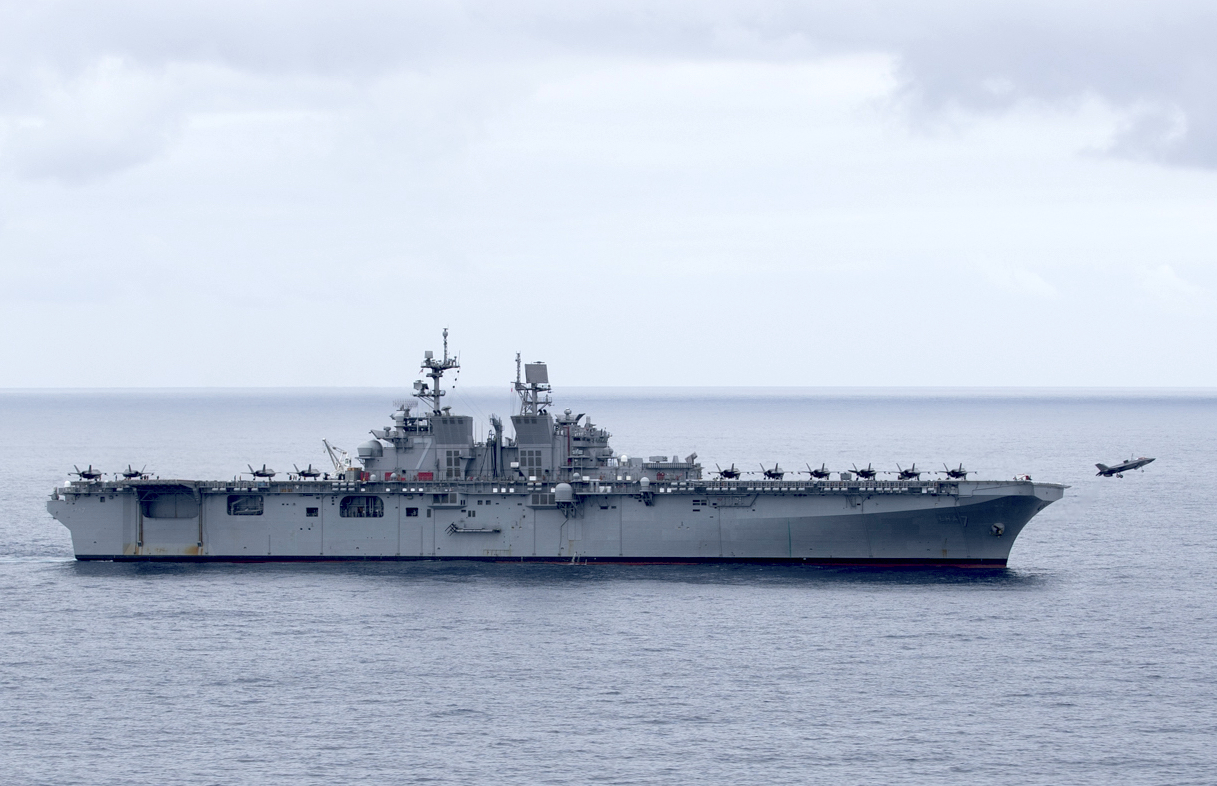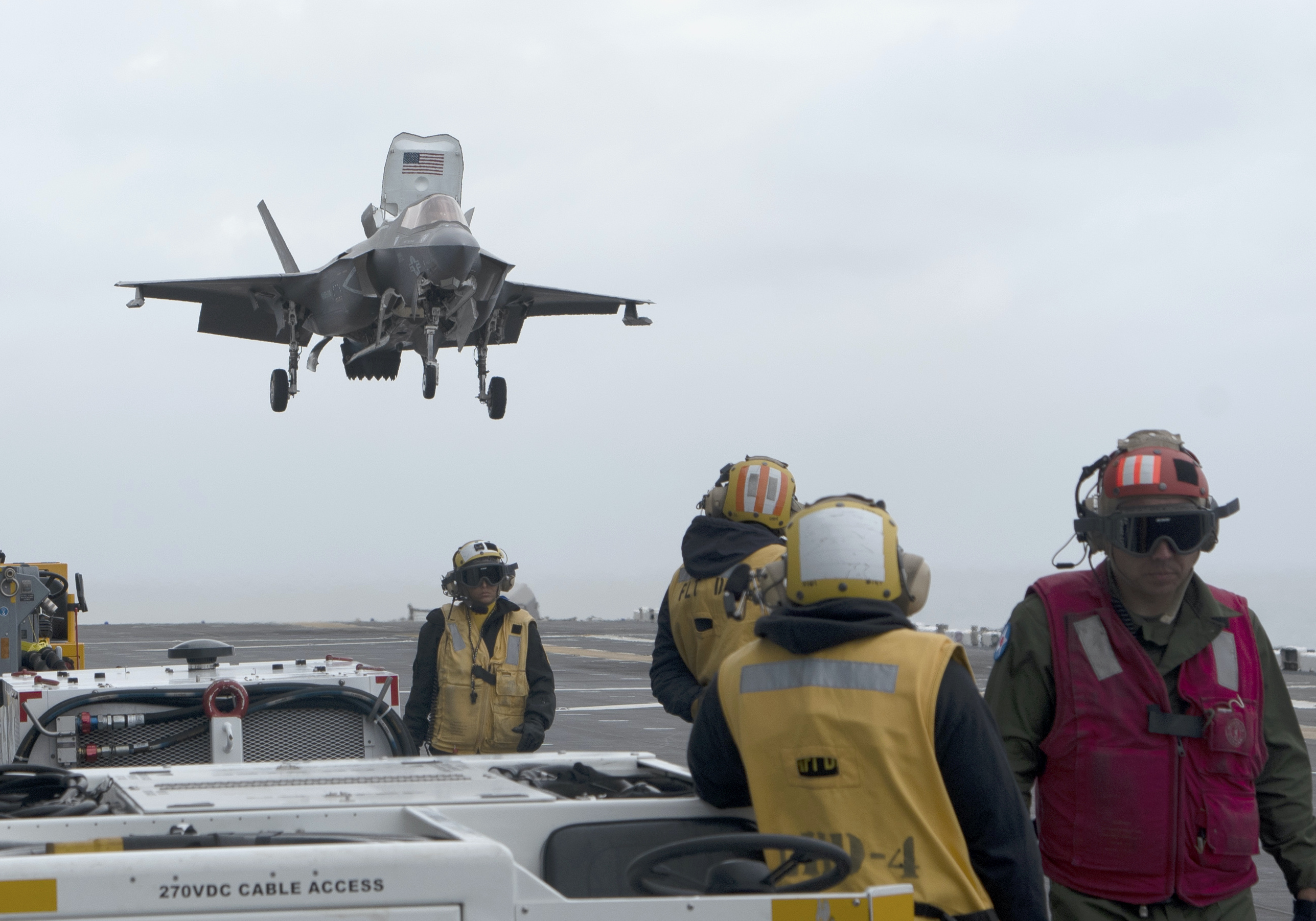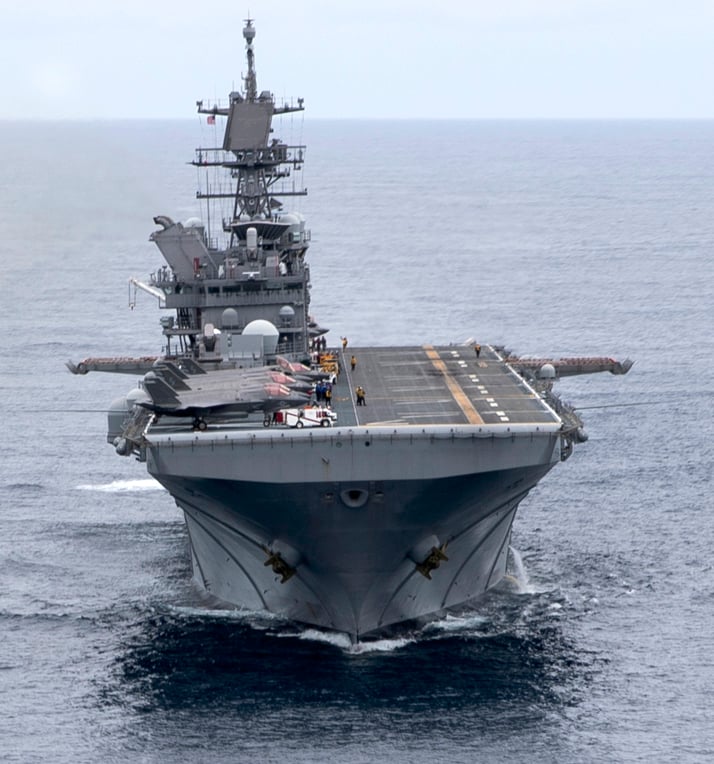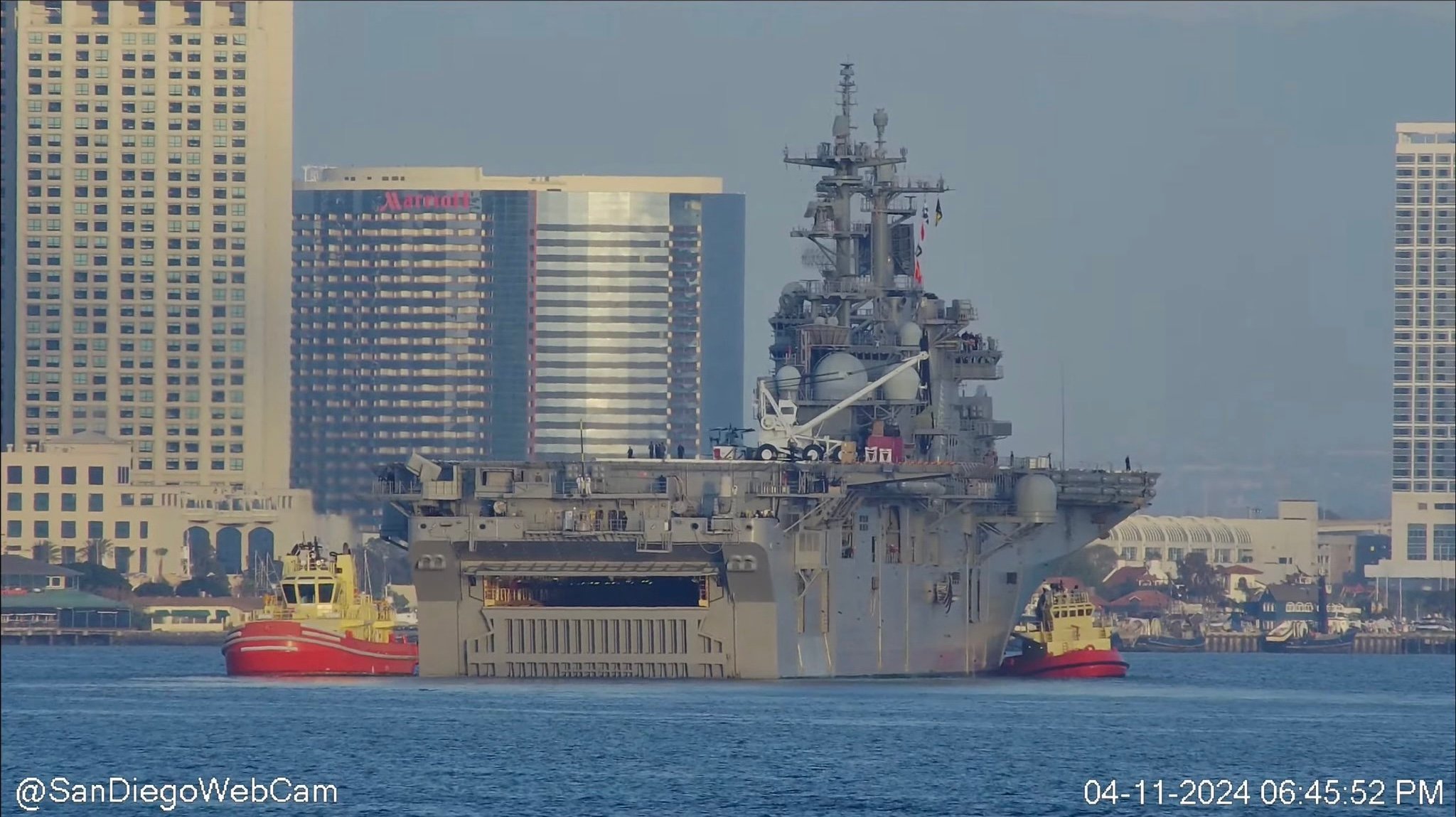
ABOARD THE AMPHIBIOUS ASSAULT SHIP USS TRIPOLI — The Marines broke a record on Sunday when they loaded the most 16 F-35B Lightning II Joint Strike Fighters ever aboard a big-deck amphibious warship.
Under cloudy skies on Sunday afternoon, deck sailors directed Marine pilots onto launching spots and maneuvered others into parking spots on the flight deck USS Tripoli (LHA-7), the Navy’s newest big deck amphibious warship, with more coming later this week.
The fighters belong to two operational squadrons — the “Vikings” of Marine Fighter Attack Squadron 225 and the “Wake Island Avengers” of Marine Fighter Attack Squadron 211, both based at Yuma Marine Corps Air Station, Ariz. – and to Marine Operational Test and Evaluation Squadron 1, based at Yuma and New River, N.C. The Marine Corps is fielding the advanced, multi-mission aircraft to replace its older F/A-18 Hornet and AV-8B Harrier jets.
But bringing more than a dozen of the F-35B jets aboard Tripoli for flight operations – a number that could grow to 18 or 20 this week – along with 500 Marines isn’t just about breaking records and a photo opportunity, military officials told USNI News.
Rather, the week-long MAG-13 training event with Tripoli is the start of identifying and building capabilities for the big deck and its crew and for Marines and their jets to conduct integrated MAG-level operations at sea, something that hasn’t been done in a generation.
“The way we’ve fought over the last 20 years obviously has been a different model. There have been a lot of different squadrons doing a lot of things in the Middle East as needed, as directed,” said Col. Chad A. Vaughn, commander of Marine Aircraft Group 13, based at Yuma.
But adversaries in today’s existing threat and the future fight are much more capable in the air than any the U.S. military, and aviators specifically, have faced in the past. Squadrons must be capable of fighting in more and larger higher-level joint operations, officials say.
The last time MAG-13 fought as an air group was 2003.
“It requires a skill set that we just haven’t practiced as much,” Vaughn said Sunday afternoon aboard Tripoli, speaking with Capt. Joel Lang, the ship’s commander.
Last October, MAG-13 deployed squadrons in a desert integrated field exercise at the Marine Air Ground Combat Center in Twentynine Palms, Calif. It was “an opportunity to learn for a MAG headquarters how to fight from the land,” Vaughn said. “This opportunity arose, in conjunction with operational tests, to put a number of F-35s, as many as we could safely put on here, and [it] simultaneously opened up a training event for us to train our MAG pilots and our MAG headquarters on how to fight from the sea.”

Like its smaller, by-name predecessor, a former helicopter assault carrier, the America-class Tripoli lacks a well deck but is designed to conduct and support Marine Corps air operations. The ship has larger fuel storage and more weapons magazines than the existing LHD class of big-deck amphibious ships, as well as advanced command, control and communications systems.
“We’re looking at options that could potentially … be provided to the joint force commander and the MEF commander to put more aircraft on this ship. The ship is uniquely suited, obviously, for aircraft operations,” Vaughn said.
The “Lightning Carrier” concept has been tossed about for years by Marines and the F-35 program office. “It just worked out perfectly with the opportunity for us to practice and train with the MAG,” Vaughn said, adding that operational testers with VMX-1 are aboard Tripoli this week evaluating lessons learned from the F-35B operations.
The concept takes a page from history. In the invasion of Iraq in March 2003, amphibious assault ship USS Bataan (LHD-5) and USS Bonhomme Richard (LHD-6) were dubbed the “Harrier carriers,” each supporting two squadrons of AV-8B Harrier attack jets for Commander Task Force 51 as U.S. and combined forces pushed toward Baghdad. The ships at the time typically had a detachment of Harriers among an aircraft mix composed largely of Marine Corps helicopters.
The at-sea exercise has been in the works for six months. Lang, a surface warfare officer who’s commanded Tripoli since September 2020, said he and MAG-13 agreed to turn the training into something of an operational rehearsal for the ship’s crew of 1,100 and his staff, working together to determine not just what is the maximum jets the ship could support but what is the “optimum” number from an operational mindset.
“It has to be what works best, so when we put them in the operational environment, it is the most efficient way to employ this capability,” Lang said. “The team is so fired up to be a part of optimizing the most lethal at-sea force.”

The week-long event, slated to wrap up Thursday, is about putting MAG Marines and Tripoli sailors through the paces in launching, recovering, moving, maneuvering and working on the F-35B jets aboard the ship. “We’re learning how to fight as a MAG. How do we operate the deck? How do we not lock his deck up with all these airplanes out here?” Vaughn said.
Questions remain how the Lightning Carrier concept will operate in the fleet without a capability to tank F-35Bs organically or without airborne early warning aircraft like the E-2D Advanced Hawkeye aboard. USNI News understands that there is set to be broader testing with the concept later this year.
“Our goal,” Vaughn added, is that “if the Navy and Marine Corps team decides that this is an option at some point, here’s the playbook that we’ve developed.”





